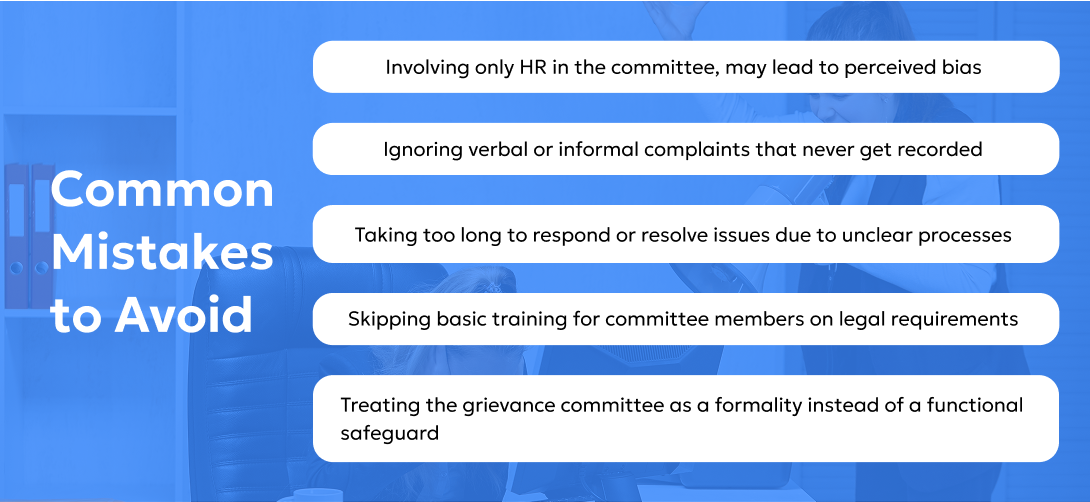
Table of Content
What if your employees stop showing up because no one’s listening to them?
In late 2024, thousands of employees from two major public transport organisations in Karnataka, stopped work. Why? Their long-pending grievances around salary delays and dues had been ignored for months. There was no formal committee to address their concerns. What began as internal frustration turned into a full-blown strike, disrupting the lives of lakhs of commuters and dragging the government into a PR and legal mess.
We’re talking about a state-level employer here. Yet, the absence of a proper grievance redressal system cost them dearly in trust, productivity, and public image.
In this blog, we’ll break down:
A grievance redressal committee is a formal group within an organisation that addresses employee complaints in a structured and time-bound manner.
This committee typically includes:
As per Indian labour law, especially the Industrial Disputes Act 1947 and state-specific Standing Orders, companies are required to have a proper grievance mechanism. This applies particularly to:

Before we get into what the law says, let’s take a real example to see how things can go wrong when grievances are ignored.
Let’s look at a real-life example to understand the impact of not having a proper grievance redressal system in place.
The strike disrupted transport services for days. The labour department intervened, declaring the strike illegal and warning of disciplinary action. Eventually, some payments were processed, but the company’s image suffered, and employee trust eroded.
These kinds of mistakes don’t just mess up internal processes—they impact real people and their lives. And once you lose an employee’s trust, it’s tough to get it back. This case is a reminder that when you ignore grievances, you’re not just risking money or time. You’re risking the faith your people have in you. That’s why grievance redressal isn’t only a legal step—it’s about being fair, responsible, and human.
Now that you’ve seen how damaging things can get without a proper system, let’s look at what Indian labour law actually expects from employers.
Grievance redressal isn’t just a good HR practice, it’s a legal necessity. Indian labour laws, including the Industrial Disputes Act and state-specific Standing Orders, require companies to establish a formal system to hear and address employee complaints. These laws aim to create a balance between employer authority and employee rights, ensuring fairness in the workplace.
To stay compliant, every organisation should understand what the law actually expects. Here’s a quick breakdown of what your grievance redressal process should ideally include:

Even with the best intentions, many companies still slip up. Let’s look at the most common errors we’ve seen on the ground.
Over the years, we’ve seen that even well-meaning organisations fall into the same traps. These mistakes may seem small at first—but they can have big consequences when not corrected in time. Here are some of the most common ones:

If you’re not sure where to start or feel like your current system has gaps, don’t worry — you’re not alone. Here’s how we step in to help.
At Vishaal Consultancy Services, we don’t just offer templates or checklists. We partner with you to get this right from the ground up. Whether you’re starting fresh or fixing what’s not working, we’ll walk you through:
Grievance redressal isn’t just some HR checklist. It’s about people feeling heard before things get messy. If your team trusts that someone’s listening and will act fairly, most problems won’t even blow up in the first place.
And if you’re unsure where to start, you’re not alone. That’s where Vishaal Consultancy Services comes in. With our Virtual HR support, labour law advisory, and statutory compliance expertise, we help you build systems that are legally sound and people-first.
See Related Blogs
Fill in your details to download our exclusive e-learning document.
Fill in your details to download our exclusive e-learning document.
Fill in your details to download our exclusive e-learning document.